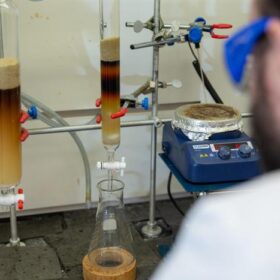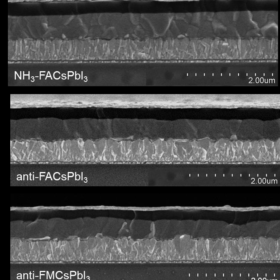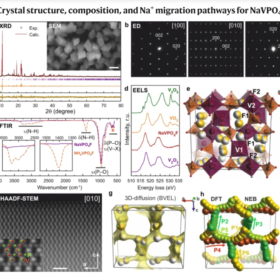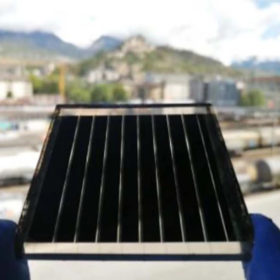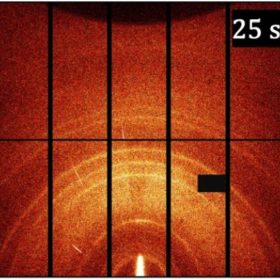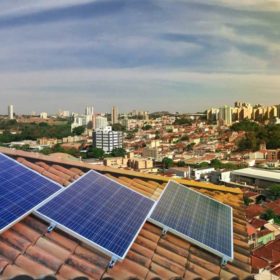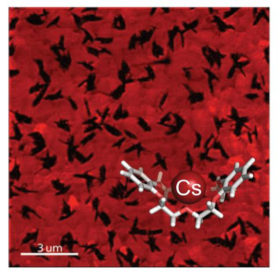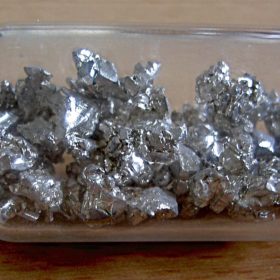High-energy, membrane-free organic redox flow battery
US researchers have developed a new high-voltage, membrane-free, nonaqueous lithium-based organic redox flow battery. They say that the elimination of the membrane decreases the upfront costs of the battery by as much as 30%.
Healing defects with ammonia for a 23.21% efficient perovskite solar cell
Scientists in China demonstrated a process to “heal” defects in a perovskite film by using an ammonia treatment after the film is formed through a solvent process. Small solar cells made using these films achieved maximum efficiency of 23.21%, while a mini-module with a 14-square-centimeter active surface area reached 20.61%.
High-voltage sodium-ion batteries with up to 15% higher energy density
Researchers in Russia have developed a new sodium-vanadium phosphate fluoride powder. It has a particular crystal structure that provides superior energy storage capacity in the battery cathode.
Isomer passivation for a 21.4% efficient perovskite module
An international team of scientists trialled a new approach to passivating defects in perovskite solar cells. Using a tailored arrangement of atoms, the team was able to overcome challenges related to the formation of a two-dimensional perovskite layer on top of the active cell material, and reach 21.4% conversion efficiency for a 26cm² active area, which they claim as a record for a perovskite device of this size.
Laser focus on perovskite film formation
Scientists in the United States developed a method to observe the structure and mechanics of a perovskite material during its synthesis and transition from liquid precursors to a solid thin film. The group says its work will provide new insight into manufacturing and the development of reliable large-scale processes for perovskite solar cell production.
Solar deployed on rooftops could match annual U.S. electricity generation
Researchers conducted a global assessment of rooftop solar PV potential using high-resolution imagery, big data, and machine learning.
Harnessing heat loss with thermionics
Scientists in Canada evaluated the potential of a lesser-known approach to boosting solar generation efficiency. Thermionics uses heat from the sun to generate electricity, and could be combined with photovoltaics to create devices with better than 40% efficiency from a single junction. In their evaluation, the scientists find promising pathways for further research, despite a mountain of challenges that will need to be overcome.
A crowning achievement for perovskite stability
Scientists in Switzerland demonstrated a new type of nanoscale doping for perovskite solar cells. By both improving stability and reducing the chance of the cells leaking any toxic lead into the environment, the discovery addresses two of the largest remaining challenges to the development of the promising class of cell materials.
Cathode discovery ‘opens up new pathways’ for calcium-ion storage
Scientists in South Korea tested a new cathode material as part of a calcium-ion battery (CIB), achieving some impressive results. The material retained more than 90% of it initial capacity after 500 cycles, alongside some of the best performance results seen so far for this technology. The scientists say that this discovery opens up “an unexplored pathway toward the realization of stable and high-power cathodes in CIBs.”
A different angle on perovskite defects
Scientists in China took a closer look at the role of defects in limiting the performance of perovskite solar cells, demonstrating a screening effect that could be tuned to make material defects “invisible” to charge carriers, greatly improving cell performance. Using this approach they demonstrate a 22% efficient inverted perovskite solar cell, and theorize several new pathways to even higher performance.
